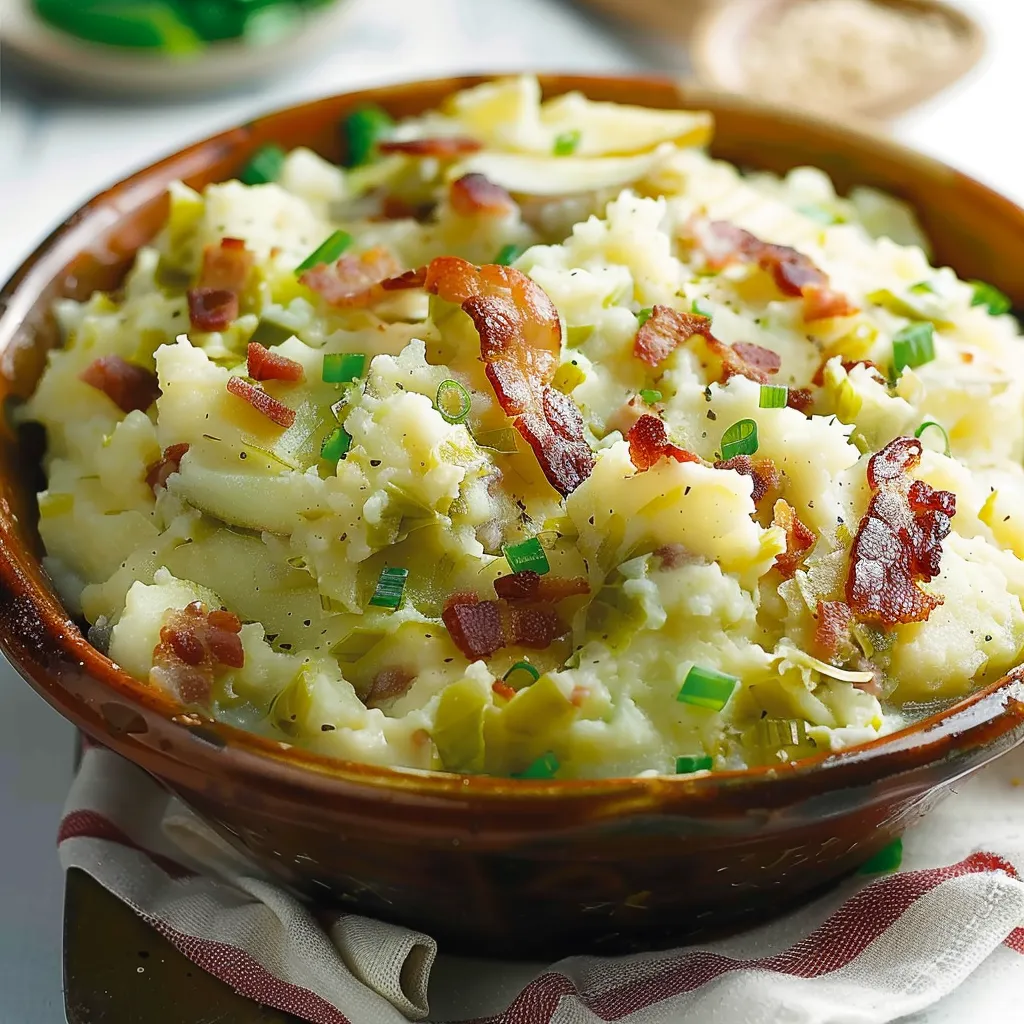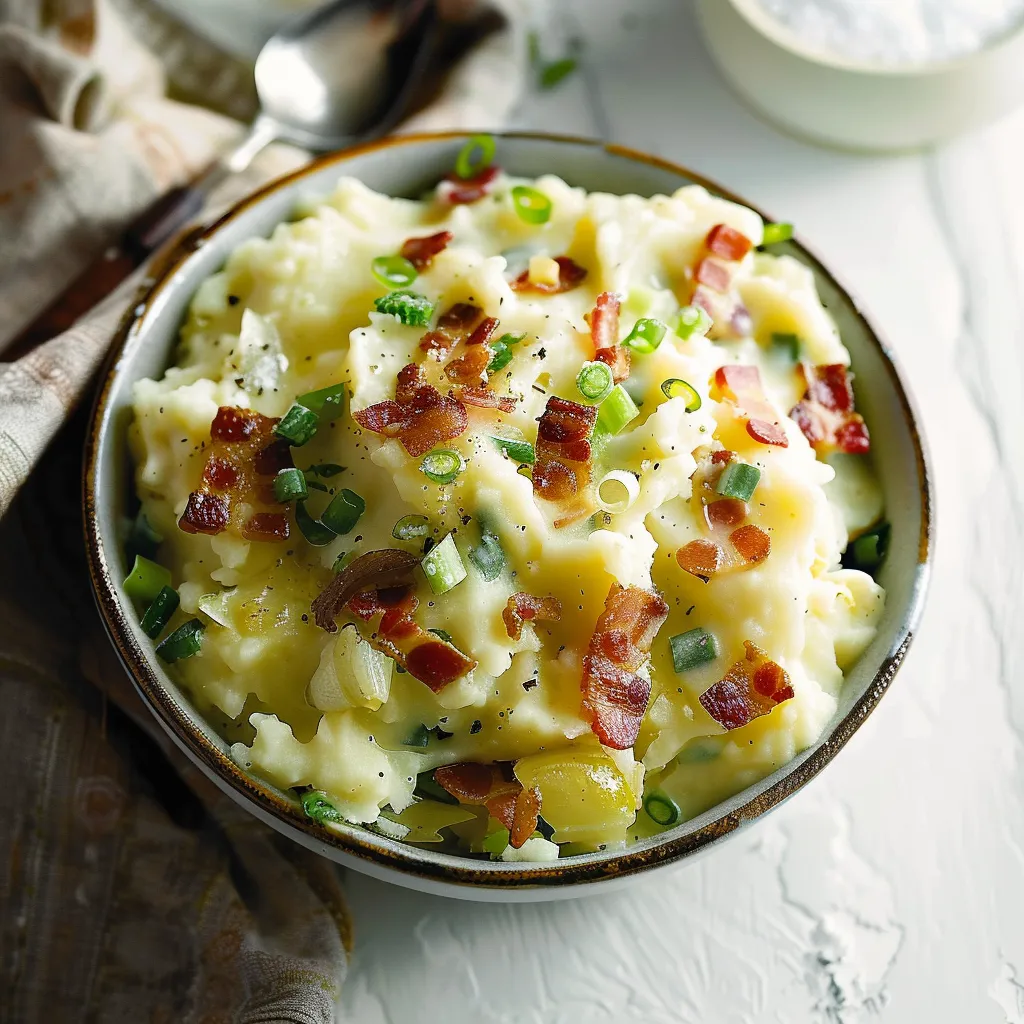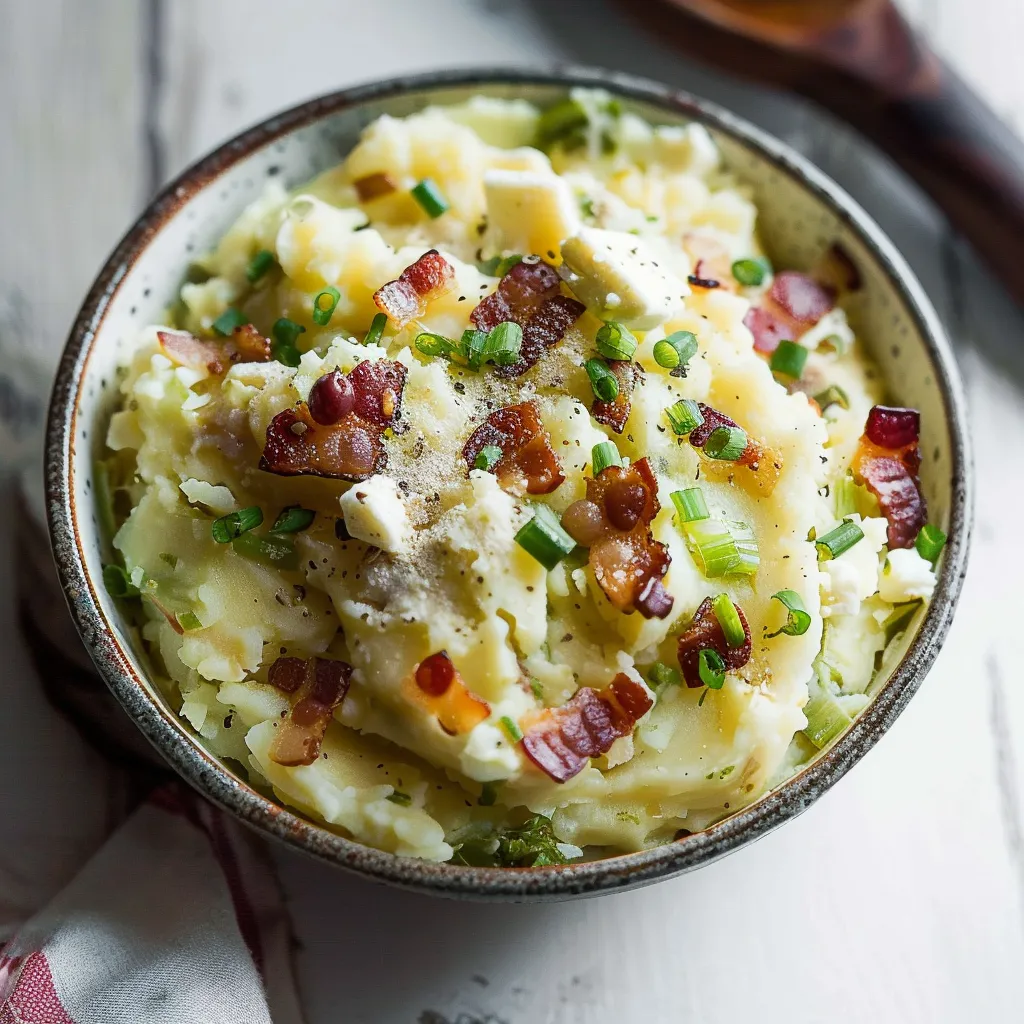 Pin it
Pin it
This classic Irish Colcannon works pure magic with simple foods—velvety potato mash loaded with butter and cream, gently mixed with soft cooked cabbage and leeks, topped with crunchy bacon bits for that perfect bite. You'll get a wonderful mix of comfort in each mouthful, where earthy potatoes meet the light sweetness of well-cooked cabbage and the rich taste of bacon. It's more than just a side—this Irish favorite spans many family kitchens through time, bringing a taste of Ireland's food story in one warm, filling bowl.
I made this last winter next to a basic roast chicken, and my friend who usually skips potatoes actually came back for more, then asked how to make it. The trick is picking good potatoes and cooking the cabbage slowly so it doesn't get that funny smell.
Key Ingredients and Smart Shopping Advice
- Potatoes: Go for medium-starch types like Yukon Gold or Red Rooster for the right mix of creaminess and body. Russets can work too if you want it fluffier.
- Savoy Cabbage: Gives you the nicest texture and mild taste. Regular green cabbage is fine too but needs to cook longer.
- Leeks: Adds a soft oniony flavor. Make sure to wash them really well to get all the dirt out.
- Butter: Try to get good unsalted butter like Kerrygold for extra flavor.
- Milk and Cream: Full-fat milk and heavy cream make it taste way better.
- Bacon: Irish back bacon is the real deal, but thick American bacon tastes great too.
 Pin it
Pin it
Step-by-Step Cooking Method
- Start with the Dairy Mix:
- Slowly melt ½ cup butter with 1 cup whole milk and ¼ cup heavy cream in a pot over low heat. Set aside but keep it warm.
- Get Your Veggies Ready:
- Peel and cut 3 pounds of potatoes into 1½-inch chunks. Cover with cold water. Slice up ½ a medium Savoy cabbage and cut 2 medium leeks into thin half-moon slices.
- Fry the Bacon:
- Cook 6 slices of thick bacon until it's nice and crispy, about 8-10 minutes. Put it aside but save all that tasty fat.
- Cook the Leeks:
- Using the bacon fat (or 2 tbsp butter if you prefer), cook those leeks with a bit of salt on medium-low until they're soft.
- Cook Down the Cabbage:
- Throw the cabbage in with the leeks, add another pinch of salt, cover and let it cook for 6-7 minutes, stirring now and then.
- Cook the Potatoes:
- Boil those potatoes in salty water until soft, about 15-20 minutes. Drain them well and put them back in the hot pot.
- Flavor Your Dairy Mix:
- Add the white parts of 4-5 sliced green onions to your warm cream mixture. Keep it warm.
- Mash Everything Up:
- Use a potato masher or ricer to get the texture you like.
- Mix it All Together:
- Slowly fold in your warm cream mix, then add the cooked cabbage, leeks, and the green parts of those onions.
- Add the Finishing Touch:
- Mix in most of the crumbled bacon, saving some to sprinkle on top. Check if it needs salt and pepper and serve with a pat of butter on top.
Meaningful Irish Food Story
I first tasted real Colcannon during a wet March trip to County Cork, when a local family invited me for Sunday dinner. The grandmother told me Colcannon wasn't just for St. Patrick's Day but was eaten year-round. She talked about how they used to hide small coins in it for kids to find—though most folks don't do that anymore for obvious reasons. Sitting there sharing food with them, I saw how a simple dish could tell stories about history, traditions, and family warmth. Now whenever I make it, I think about that cozy meal.
Changing with the Seasons
Colcannon can switch up nicely as the year goes on. Spring brings young cabbage and fresh leeks for a lighter dish. Summer's new potatoes add natural sweetness. Fall calls for hardy kale, and winter versions work well with parsnips or turnips mixed in. My best version ever came from early autumn when I added roasted garlic and fresh herbs from the garden, showing how old recipes can grow while staying true to their roots.
From Side Dish to Main Event
What started as just a side has turned into a full meal at our house. We bump up the veggies and add extra bacon (sometimes Irish sausage too) to make it heartier. Adding white beans or putting an egg on top makes it even more filling. My picky nephew calls it his favorite dinner—not even realizing he's eating lots of veggies. It shows how classic dishes naturally change to fit what families need today.
Leftover Magic Tricks
Don't toss leftover Colcannon—it's got so many uses! Fry it up into crispy potato pancakes for breakfast. Shape it into little balls, coat them, and bake for tasty appetizers. My biggest wow moment was using it as filling for hand pies—wrapped in pastry and baked till golden. These tricks remind me that leftovers aren't just repeats of last night's dinner; they're chances to try something new.
Making It Healthier Without Losing Flavor
When someone in my family needed to cut back on fat, I worried Colcannon might be off the menu. But swapping half the potatoes for steamed cauliflower, using chicken broth instead of cream, and adding olive oil in place of some butter made a lighter version that still tasted great. Seeing how happy they were to still enjoy it showed me that old recipes can fit modern health needs without losing what makes them special.
Pro Cooking Secrets
Making true Irish Colcannon links us to countless home cooks who turned basic ingredients into something amazing. Following the old ways—slow-cooking cabbage, getting that perfect potato mash, and using plenty of good butter and cream—creates something unforgettable. When everyone goes quiet after the first bite, I know some foods are more than just simple—they're both comforting and a bridge to the past.
 Pin it
Pin it
Frequently Asked Questions
- → What’s the best cabbage to choose?
- Savoy cabbage works wonderfully since it cooks fast and tastes light. Green cabbage or kale are also classic options that fit the dish perfectly.
- → How can I make a vegetarian version?
- It’s easy—just skip the bacon and sauté the veggies in butter. For a smoky touch, add a pinch of smoked paprika or a small splash of liquid smoke.
- → Colcannon or Champ—what’s the difference?
- Both use mashed potatoes, but Colcannon usually has cabbage or kale added in, while Champ includes only scallions. This recipe blends traits from both!
- → How should I serve it for the best flavor?
- Classic pairing is with a pool of melted butter in the center. Try it with sausages, ham, or corned beef—or enjoy it as a main meal on its own!
- → Why mix two kinds of potatoes?
- Russets are nice and fluffy, while Yukon golds bring a creamy, buttery flavor. Combining both makes the mashed potatoes the perfect base for this dish.
